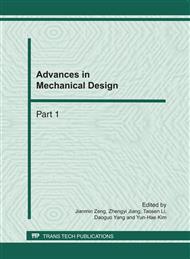p.1051
p.1058
p.1065
p.1069
p.1074
p.1080
p.1084
p.1088
p.1094
Adhesion Control of High Speed Train under Electric-Pneumatic Braking
Abstract:
As the result of wheel-rail surface conditions, external environment and vehicle speed change, the state of adhesion is changing. In order to ensure the validity and security of high speed train in braking, and obtain the maximum utilization of adhesion, control system must provide a stable and effective braking force. This paper presents a new pressure model of brake cylinder, and a 90 DOF vehicle dynamic model, uses Oldrich Polach’s model to calculate adhesion force, and adds a track irregularity on vehicle model. Switch signal controls brake cylinder. Direct torque strategy controls the induction motor, Recursive least squares determines the adhesion-slip state of wheels, Sliding mode control Strategy calculates the best braking force. The simulation results show the high brake performance of this wheel-slip prevention system, and the desired objective of control.
Info:
Periodical:
Pages:
1074-1079
Citation:
Online since:
February 2011
Authors:
Price:
Сopyright:
© 2011 Trans Tech Publications Ltd. All Rights Reserved
Share:
Citation:


